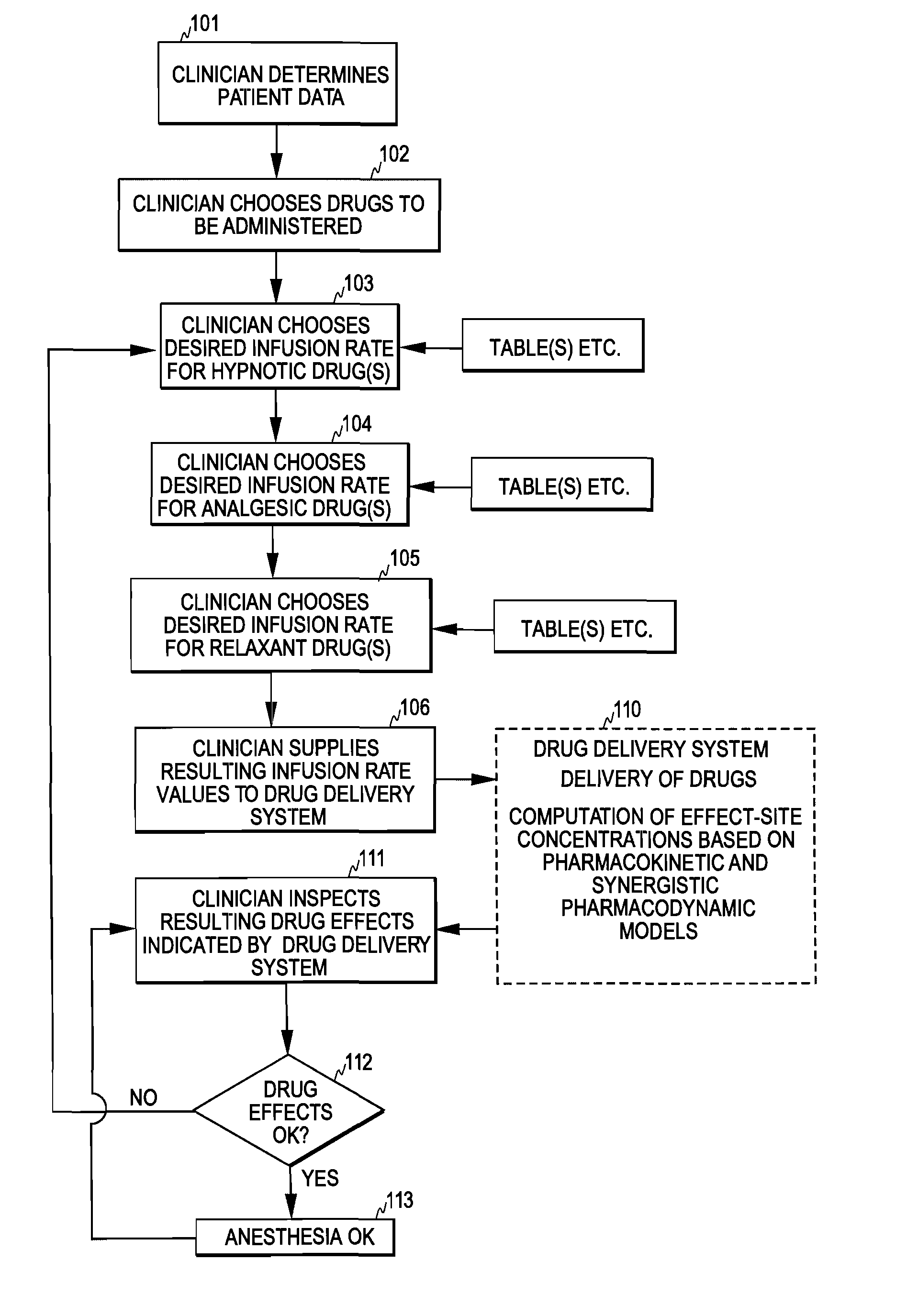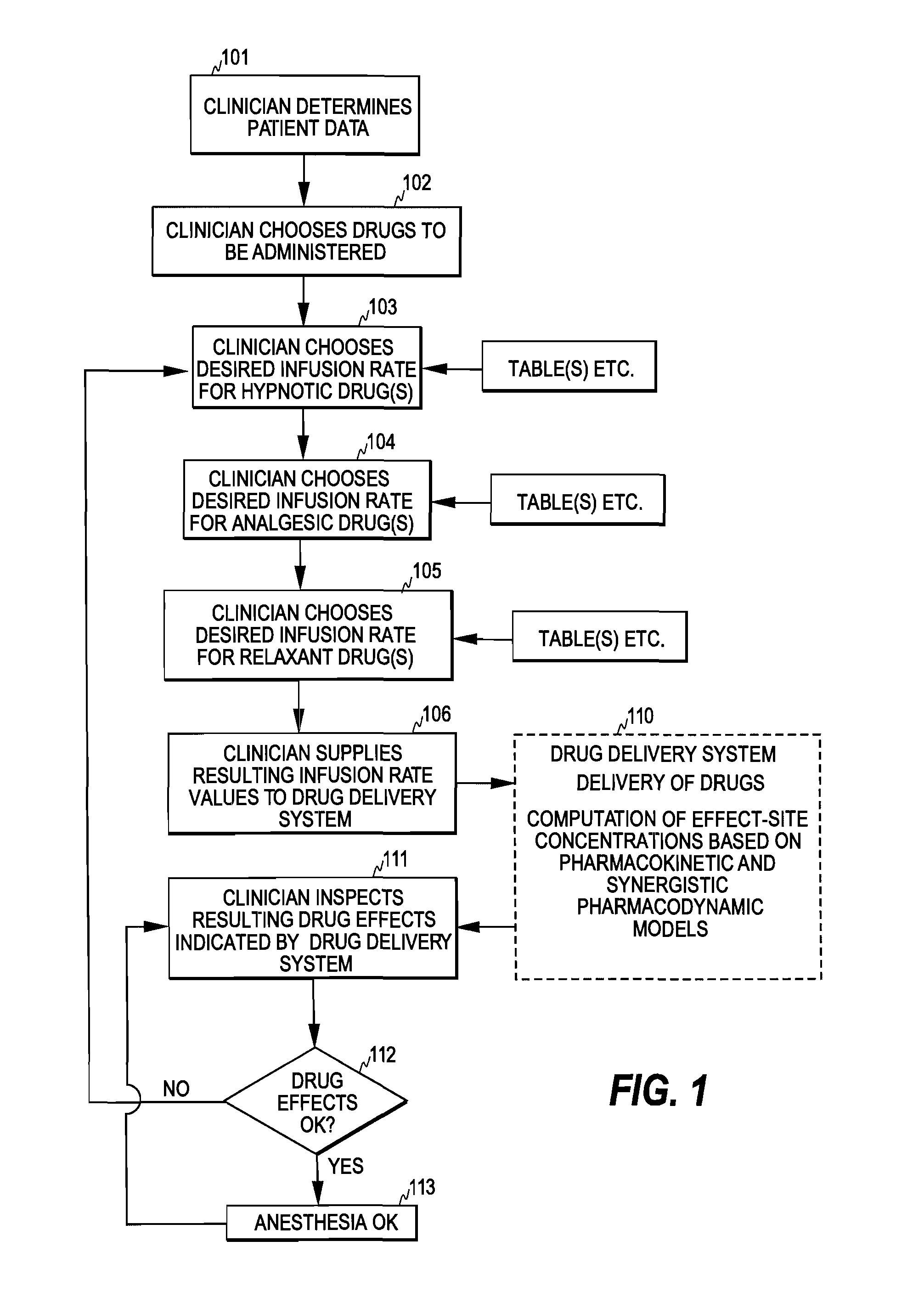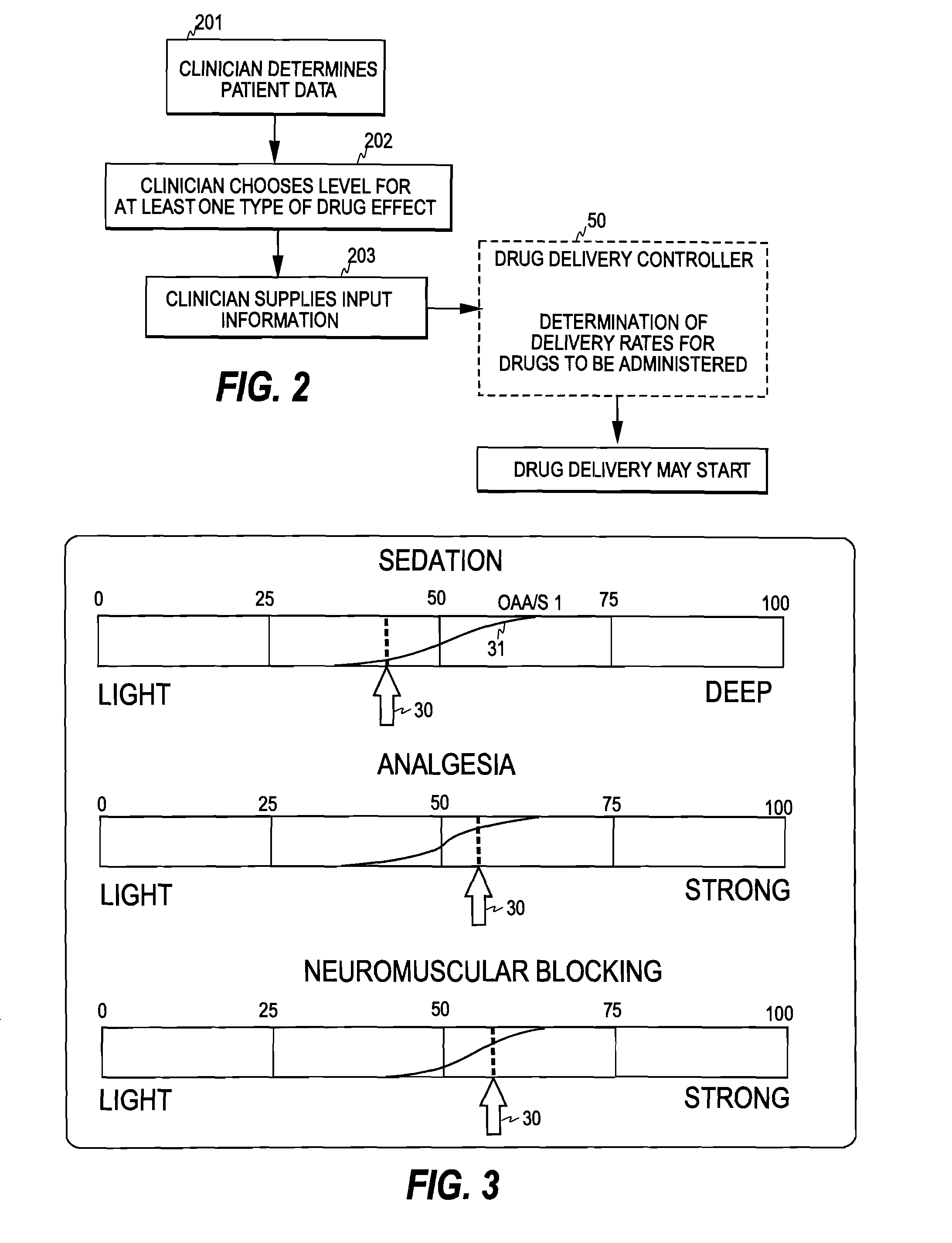Control of Drug Administration
a technology of drug administration and control mechanism, applied in the field of drug administration control, can solve the problems of ineffective potency, use of volatiles, and clinical staff still need to memorize and understand complex sets, etc., and achieve the effects of improving drug control mechanism, improving effectiveness, and implementing cost-effectively
- Summary
- Abstract
- Description
- Claims
- Application Information
AI Technical Summary
Benefits of technology
Problems solved by technology
Method used
Image
Examples
Embodiment Construction
[0028]FIG. 2 illustrates one embodiment of the control mechanism of the invention. The clinician first determines patient data, such as age, weight, height, and gender (step 201). After this, the clinician selects a desired level for at least one type of drug effect at step 202. For example, for anesthesia the clinician typically selects a desired level for hypnotic drug effect and a desired level for analgesic drug effect, often also a desired level for relaxant drug effect.
[0029]Having selected the drug effect level(s), the clinician supplies the patient data and the selected effect level(s) as input information to a drug delivery controller 50 of the invention (step 203). As discussed below, the drug delivery controller may also assist the clinician in determining the patient data and selecting the effect level(s). Based on the input information, the drug delivery controller then determines a delivery rate for each drug to be administered. In the input information the clinician m...
PUM
 Login to View More
Login to View More Abstract
Description
Claims
Application Information
 Login to View More
Login to View More - R&D
- Intellectual Property
- Life Sciences
- Materials
- Tech Scout
- Unparalleled Data Quality
- Higher Quality Content
- 60% Fewer Hallucinations
Browse by: Latest US Patents, China's latest patents, Technical Efficacy Thesaurus, Application Domain, Technology Topic, Popular Technical Reports.
© 2025 PatSnap. All rights reserved.Legal|Privacy policy|Modern Slavery Act Transparency Statement|Sitemap|About US| Contact US: help@patsnap.com



